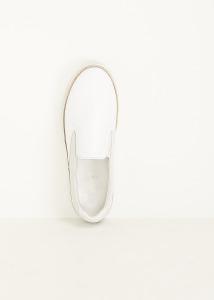The fashion world is full of sayings, catchphrases and maxims that, even though true, are often misunderstood by many who are trying to reach new heights of elegance, beauty and refinement.
One often hears the "less is more" saying, a saying that is often correlated with minimalism and with a minimalist elegance. From an aesthetic point of view, a minimalist object/garment is something that has been stripped down of any unnecessary additions and, in doing so, has preserved its message, originality, creativity and style. The reason why simplicity is considered "the ultimate sophistication", as Leonardo da Vinci would say, is because in the above-mentioned simplifying process, the creator of the object must maintain their creation's deepness, even though they will renounce to most physical elements that (could) compose it.
But how is such a minimalist aesthetic achieved? How can one technically maintain an object's depth, while reducing its composing elements? To be able to do this, one must have a very good grasp of the subtle things that make an object beautiful yet minimal, meaning that they have to work with elements that are not perceived at a first level of reading and to know so much about human nature and perception psychology, that they will know how making even the slightest change to a line, a shape or a texture will change the way in which the object is subconsciously perceived. These elements, such as proportion, lines and shapes, if mastered with fragility, artfulness and skill, are what can make the difference between a piece of clothing that has just a functional role and a piece that can be ranked as art; or that can be at least timeless, as opposed to just trending.

Often times, " less is more" is a true statement, but achieving simplicity can turn out to be very hard.
Minimalism concretizes the notions of simplicity, elegance, naturalness and beauty. These ideas are the things minimalist elegantologists are working to achieve. There are people in the fashion industry, who are actively seeking to promote only such ideals and a minimalist elegant aesthetic. For example, such a person is a Seattle woman, Jill Wenger, who in 2003 launched a shop called Totokaelo [read Toh-toh-kye-oh]. The brand, which has now both an online and an offline presence, offers only clothes that were handpicked by their staff, who know exactly what they are looking for. A minimalist elegance, a timeless aesthetic and a bold creativity is what the Totokaelo CEO is looking for when deciding in which direction to take her shop and brand next.
The Totokaelo shop features clothes from brands and designers such as Maison Martin Margiela, Rick Ownes or Junya Watanabe. These are brands/designers are known among fashion aficionados worldwide for their minimal approach to design and for their simple, yet very bold pieces. Featuring an apparently drawn-back aesthetic, but which is in fact a paramount of style, these brands have managed to develop collections that prove that at least sometimes, less is more.
Designing simplicity is no easy job and using the resulting outcomes to create new meanings, i.e., outfits that reflect your style, is a work that is just as complicated and complex. Managing to pull off minimal looks is a symbol of understanding the intricate and complex bases of certain areas of life.

To conclude, we can say that the formula behind beauty is power plus simplicity. However, it needs to be said that this does not mean that a "more is more" aesthetic cannot be simple, elegant and powerful, because in the end, it's all about the approach, the vision and the style of the creator, which can be anyone of us.
Fraquoh and Franchomme
Further reading:
Back to basics: Minimalist watchesUniversality in elegance: Finding that one perfect watchP.S. What do you think? Is less really more? Share your feedback, questions or thoughts in the comments below! For more articles on style, fashion tips and cultural insights, you can subscribe to Attire Club via e-mail or follow us on Facebook or Twitter!

